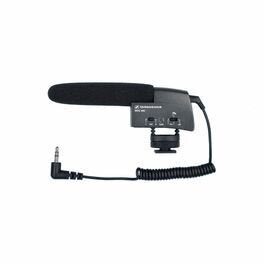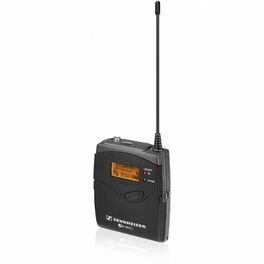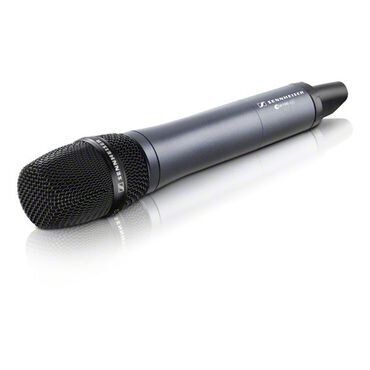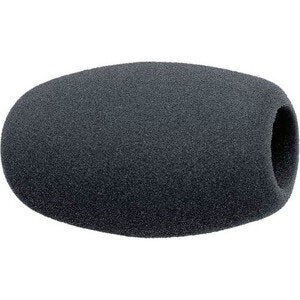
Last week, I wrote the first post in this series, "Top Reasons Why Video Is Key For Your Small Business!."
The second post in the series discussed "How To Create Amazing Videos For Your Small Business" and I mentioned why videos are key to a successful marketing strategy.
Here are a fewmust-know stats on online video.
Online video now accounts for 50 per cent of all mobile traffic and up to 69 per cent of traffic on certain networks.
52 per cent of consumers say that watching product videos makes them more confident in online purchase decisions.
Sound is a critical part of your video. Studies have been done, and exist online, that show sloppy/degraded video can be tolerated as long as the sound is solid. The converse isn't true. Have a beautiful image but your sound is distorted, echoes or inconsistent? Nobody will watch. Invest in learning how to capture good sound and acquiring the tools to do so. Your customers will thank you!
Recently, I was fortunate to speak with Achim Gleissner, head of commercial management broadcast and media at Sennheiser. Achim shared all of the top tips to have quality sound for your videos.
Why is it important to use an external mic (outside of the camera mic) in videos?
There are mainly two main reasons to use external microphones when shooting videos: quality and perception. All camera manufacturers, including smart phone manufacturers, put a lot of focus on the video quality of their devices. This is getting better with every new generation, and audio is lagging behind. Yes, there is audio on the recording, but the quality level is typically much lower than the video quality.
The sound image the user typically gets has two issues. On one hand, the audio quality is lower than the video quality, so there is a clear mismatch in perception. Secondly, a typical built-in mic records the sound where the camera is, not the position the camera looks towards. This results in an even bigger mismatch.
In order to create more of a natural impression, there is only one solution: Match the audio to the video perception. Human hearing is very sophisticated, and if you record what you hear and then listen back, you may be surprised that you hear much more of the room reverberation than you thought. One way of dealing with this is to move your microphone closer to the sound source.
The second best option is to use a directional microphone that points towards the sound source. Both solutions require an external microphone, which also will deliver better audio quality compared with a built-in microphone.
What kind of mics are there to use when making videos, and what are their purposes?

Sennheiser ShotGun Microphone MKE 400
Depending on the type of video, there are mainly three different basic types of microphones: Lavaliers (clip-ons), handhelds and shotguns. As mentioned above, the best way to achieve a natural sound is to get as close as possible to the sound source.

Sennheiser Lavalier Microphone SK 100 G3
For blogs, mobile journalism and documentaries alike, the best choice is a clip-on microphone. It's nearly invisible, it can be positioned very close to the speaker and is easy to handle. Handheld mics are typically most useful in interviews and in noisy environments.
If there is no way to control the situation you are capturing, then a highly directive shotgun mic on your camera is the best choice. However, do not expect a shotgun to work like a torch over a long distance.

Sennheiser Handheld Microphone SKM 100-835 G3
If you can't run long cables from the microphone to the camera, you might consider investing in a wireless system. But be aware that there are significant differences in quality when it comes to wireless transmission. A cheap wireless system will very likely deliver disappointing results.
How to use each mic?
Clip-on microphones are easy to use. With very few exceptions, they have an omnidirectional characteristic -- in other words, they capture sound all around them like they are in the center of a ball. Don't cover them with clothing, as this will cause noise.
Handheld mics are either directional (cardioid) or omnidirectional, like clip-ons. Both have advantages and disadvantages. Omnis pick up more surrounding noise, but are more forgiving if you don't point them to the talker, e.g. in an interview.
As mentioned, shotgun microphones on cameras are easy to use, but don't expect too much in terms of directivity when you a great distance from the sound source.
All microphone setups have three enemies: wind, handling noise and cellphones. When shooting outdoors, wind is your primary enemy. You alleviate this concern by using proper wind protection, mostly foam or furry, which prevents air turbulence to reach the membrane -- the core of any microphone.

Sennheiser MZW-1 Foam Windscreen
These windscreens are available for any microphone type. Keep in mind, that breath or "P" sounds have the same negative effect when the hit a microphone, thus windscreens sometime even make sense indoors.
Handling noise also creates disturbances, can be referred to as structure-borne noise. Rubbing on the grip of a handheld microphone or snapping on a cable of a clip-on microphone cause audible distortions. Investing in a high-quality microphone can help reduce the risk of structure born noise.
Further, Cellphones cause radiation -- even when just being switched on. This can cause pulsing noises and clicks, especially if you have a cellphone in close proximity to a microphone. As with handling noise, cheap microphones are more susceptible to these kinds of noises versus high quality mics, which often have proper shielding in place.
Top tips for people using a mic for the first time?
The golden rule is get used to your tool. Use it, try it, do some test recordings and become intimately familiar with it. Test its limits in extreme situations, and remember your enemies.
The most annoying thing, apart from the three enemies, is distortion. This can be the result of setting the wrong levels on your recording device (e.g. the camera). Do a test recording with the maximum possible volume you are likely to get--shout into it, and then listen to the recording. If it is distorted, reduce the recording level. Keep in mind, a distorted audio recording is like an overexposed photo.
There is no way to correct this afterwards. The more test recordings you do, the better off you will be. With handheld microphones, make sure to check the handling noise and the directivity. There is a good reason why professional reporters sometimes use one particular microphones for their entire career, as they know exactly how it behaves.
Any other tips or helpful information?
First of all, based on your application (e.g. what you are recording), decide which of the basic microphone types will suit best. When it comes to microphones, there is no Swiss Army Knife.
There may be huge differences among microphones that look similar, even when the data appears to be similar. Trust brands that have a long history and expertise in the area of sound capturing, and trust other users based on their experience. Ideally, you will find a dealer that allows you to test several microphones before purchasing. As with every other product category, a cheap product will probably backfire and make you disappointed.
These basic rules and tips apply to any wired microphone. Wireless systems provide freedom, yet are more expensive and involve a science of their own. There are very few companies that are able to manage this. If you are unfamiliar with wireless systems, spend time to learn about it from other users in forums, or consult a respected dealer prior to purchasing anything.
Stay tuned for the next instalment in my blog series. I will discuss the bags you can use to carry all of this equipment and the top tips on how to get started!
I love all these helpful video tips and will use them as I continue to work on my blog and small business.
Your suggestions are always welcome, as I continue on my journey to live life to the fullest. Let's have the very best 2016!
Visit Sacha daily at SachaD.com
Follow HuffPost Canada Blogs on Facebook
MORE ON HUFFPOST:
